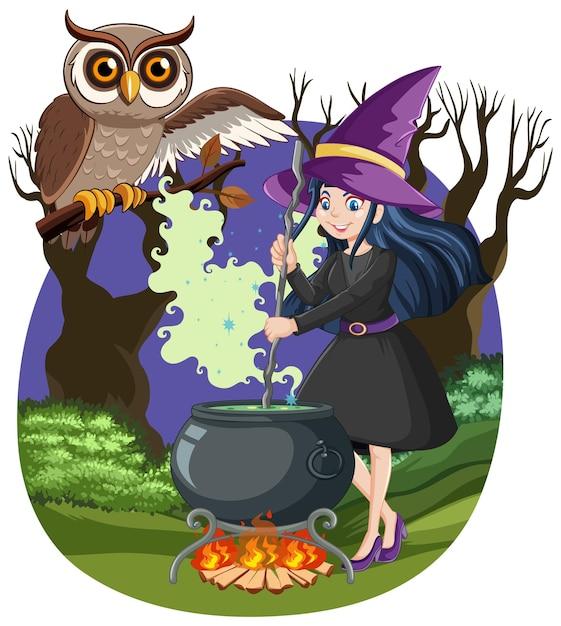With its timeless tale of creation, obsession, and tragedy, Mary Shelley’s iconic novel, Frankenstein, remains a captivating piece of literature that continues to resonate with modern readers. While often classified as a gothic horror story, the novel is also infused with elements of romanticism, a literary movement characterized by imagination, emotion, and a celebration of nature. In this blog post, we will delve into the romantic elements present in Frankenstein, examining how they contribute to the overall theme of the novel and add richness to its narrative. So, grab a cup of tea and join us on this insightful journey.
Before we delve into the romantic elements in Frankenstein, it’s essential to understand what romanticism represents. The romantic period, which flourished in the late 18th and early 19th centuries, was a literary and artistic movement that emphasized the individual’s emotions, intuition, and imagination over rational thought. Nature, beauty, and the supernatural played significant roles in romantic works, often intertwined with themes of passion, love, and longing. With this understanding, we can explore how romanticism is skillfully employed in Shelley’s Frankenstein, giving depth and complexity to an already mesmerizing narrative.
Now, let’s embark on an exploration of the romantic elements found within the pages of Frankenstein, and discover how they contribute to the overall literary experience. From the reimagining of nature to the portrayal of longing and the quest for love, we will examine the romantic elements that make this novel an enduring masterpiece. So, fasten your seatbelts as we dive headfirst into the heart of romance within the realm of Frankenstein.
What are the Romantic Elements in Frankenstein
In Mary Shelley’s Frankenstein, there are several romantic elements that contribute to the novel’s depth and appeal. These elements not only add a touch of emotion and sentimentality but also explore themes of nature, individuality, and the pursuit of knowledge. Let’s delve into some of the key romantic elements found in this iconic novel.
The Romantic Notion of Nature
One significant romantic element in Frankenstein is the emphasis on nature. Victor Frankenstein often finds solace and peace in the natural world, seeking refuge from the chaos and despair that plague him. Shelley’s vivid descriptions of the landscapes and natural surroundings provide a stark contrast to the darkness and gloom of the story. From the picturesque beauty of the Swiss Alps to the serene tranquility of the countryside, the novel showcases nature’s power to heal and restore.
The Rebellion against Convention
Another romantic element in Frankenstein is the rebellion against societal conventions. Victor Frankenstein’s relentless pursuit of knowledge and ambition mirrors the romantic idea of challenging traditional norms. He defies societal expectations by delving into the realm of science and creating a being that surpasses the boundaries of life and death. This rebellion against societal norms reflects the romantic belief in individuality and the rejection of conformity.
The Exploration of the Sublime
The concept of the sublime is also a prominent romantic element in the novel. The sublime refers to the overwhelming sense of awe and fear experienced when confronted with something immense and powerful. Victor Frankenstein’s creation embodies the sublime, eliciting both terror and fascination. Shelley uses vivid and evocative language to convey the creature’s monstrous appearance, provoking a range of emotions in the reader. By exploring the realm of the sublime, Frankenstein taps into the romantic fascination with fear and the unknown.
The Theme of the Outcast
One of the most profound romantic elements in Frankenstein is the theme of the outcast. The creature, rejected by its creator and society, symbolizes the alienation and isolation often experienced by those who deviate from the norm. The creature’s longing for companionship and love evokes empathy from the reader, highlighting the human longing for connection and acceptance. This theme explores the depths of human nature and questions the consequences of our actions.
The Power of Emotion
Lastly, Frankenstein encapsulates the romantic belief in the power of emotion. Throughout the novel, the characters experience intense and tumultuous emotions, which drive their actions and decisions. Shelley portrays the range of human emotions, from Victor’s obsession and guilt to the creature’s longing for understanding and revenge. By emphasizing the significance of emotions, Frankenstein delves into the complexities of the human psyche, highlighting the strengths and vulnerabilities that come with our capacity to feel.
In conclusion, Mary Shelley’s Frankenstein incorporates several romantic elements that elevate the novel’s depth and appeal. From the depiction of nature’s beauty to the exploration of rebellion, the sublime, the outcast, and the power of emotion, these elements contribute to the rich tapestry of the story. By embracing these elements, Frankenstein encapsulates the essence of romanticism while delving into profound themes that resonate with readers even in the present day.
Keywords: romantic elements in Frankenstein, nature, rebellion, sublime, outcast, power of emotion
FAQ: Romantic Elements in Frankenstein
How is Romanticism Utilized in Frankenstein
In Frankenstein, Mary Shelley beautifully incorporates elements of Romanticism to create a captivating and emotionally-charged tale. Romanticism, which emerged in the late 18th century, was a literary and artistic movement that celebrated emotion, imagination, and the supernatural. Shelley expertly utilizes these characteristics to enhance the depth and allure of her novel.
Throughout Frankenstein, Shelley employs vivid descriptions of nature’s beauty, emphasizing its sublime and awe-inspiring qualities. The protagonist, Victor Frankenstein, often finds comfort and solace in the natural world, reflecting the Romantic notion of finding spiritual connection and inspiration in nature.
The novel also delves into the exploration of the human psyche and the complexities of human emotions. This introspective approach aligns with the Romantic focus on the individual, their feelings, and the transcendental powers of the imagination.
What Defines the Characteristics of the Romantic Period
The Romantic period, which spanned the late 18th to the early 19th century, was characterized by its emphasis on individualism, strong emotions, and the pursuit of the sublime. This movement rebelled against the precision and rationality of the Enlightenment era and instead exalted the power of imagination, intuition, and the irrational.
Romantic literature often centered around the individual’s journey, exploring their inner turmoil, desires, and aspirations. Nature played a vital role as a source of inspiration and reflection, with its untamed beauty mirroring the untamed emotions of the individual.
What Are the Romantic Elements Found in Frankenstein
In Frankenstein, numerous romantic elements can be found, imbuing the narrative with depth and intensity. Some of these elements include:
-
Emotional Intensity: Shelley vividly portrays the characters’ tumultuous emotions, particularly Victor’s inner torment and the monster’s cycle of longing, rejection, and revenge. These intense emotions reflect the Romantic emphasis on exploring the depths of the human psyche.
-
The Supernatural: The inclusion of a monstrous creature brought to life through scientific experimentation adds a supernatural element to the story. This touch of the supernatural appeals to the Romantic fascination with the unknown and the mysterious.
-
Sublime Nature: Shelley’s intricate descriptions of nature’s grandeur and power evoke a sense of the sublime. From the icy landscapes of the Arctic to the peaceful beauty of the Swiss Alps, the natural world in Frankenstein instills both awe and inspiration, evoking a sense of the transcendent.
What is Romanticism in a Nutshell
Romanticism, in a nutshell, is an artistic and literary movement that emerged in the late 18th century. It celebrated individualism, emotions, imagination, and the mysterious aspects of nature. Romantic works often delved into the complexities of human emotions and spiritual experiences, creating intense and emotionally charged narratives.
Is the Monster in Frankenstein Considered a Romantic Hero
While the monster in Frankenstein is often portrayed sympathetically, it does not fit the traditional mold of a Romantic hero. Romantic heroes typically embody characteristics such as nobility, independence, and a longing for something greater. However, the monster’s actions stem more from its desire for acceptance and revenge rather than a pursuit of lofty ideals. Nevertheless, the monster’s complexity and internal struggles align with the Romantic emphasis on exploring the depths of the human psyche.
What Are Some Romantic Elements Found in Frankenstein
-
Emotional Turmoil: The novel delves into the intense emotional struggles of the characters, portraying their inner turmoil and psychological conflicts.
-
Nature’s Influence: Nature plays a significant role in Frankenstein, providing solace and inspiration for various characters. The sublime beauty of the natural world reflects the Romantic fascination with the untamed and awe-inspiring aspects of nature.
-
The Prominence of the Individual: Frankenstein explores the individual’s pursuit of knowledge, desires, and aspirations. The story centers around the consequences of Victor’s ambition and the monster’s search for belonging, highlighting the Romantic focus on the individual’s inner journey.
-
The Unknown and the Supernatural: The creation of the monster through scientific experimentation introduces a supernatural element into the narrative. This element echoes the Romantic curiosity and fascination with the mysteries of the world.
Incorporating these romantic elements, Mary Shelley’s Frankenstein showcases the depth and complexity of human emotions, the power of nature’s sublime beauty, and the timeless allure of the unknown. Its enduring appeal lies in its ability to engross readers, challenging their perceptions while exploring profound themes of the human experience.

